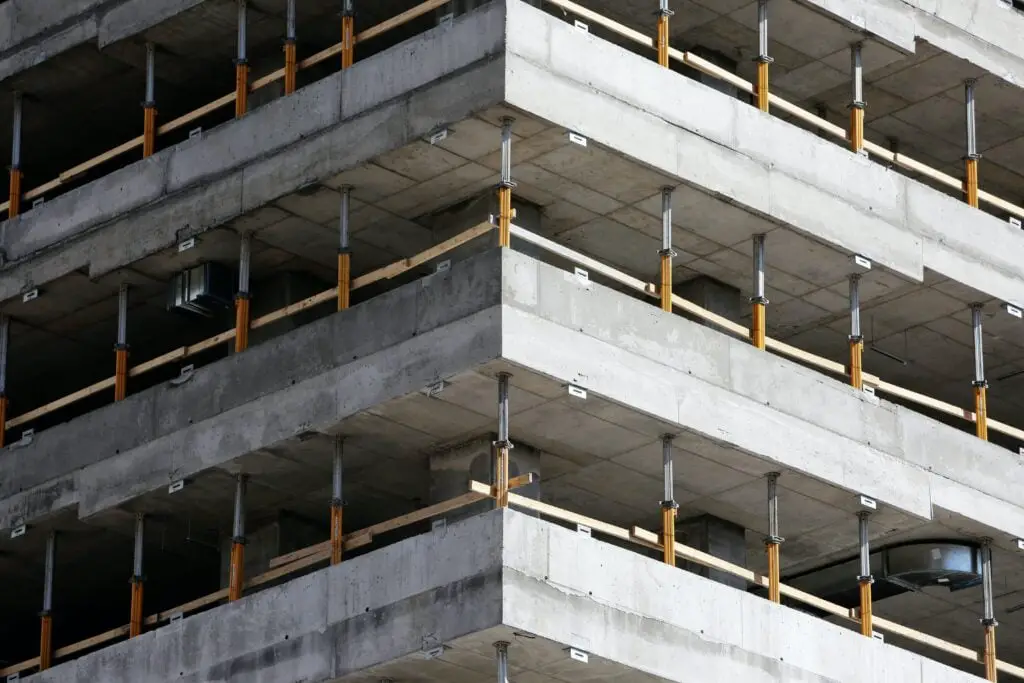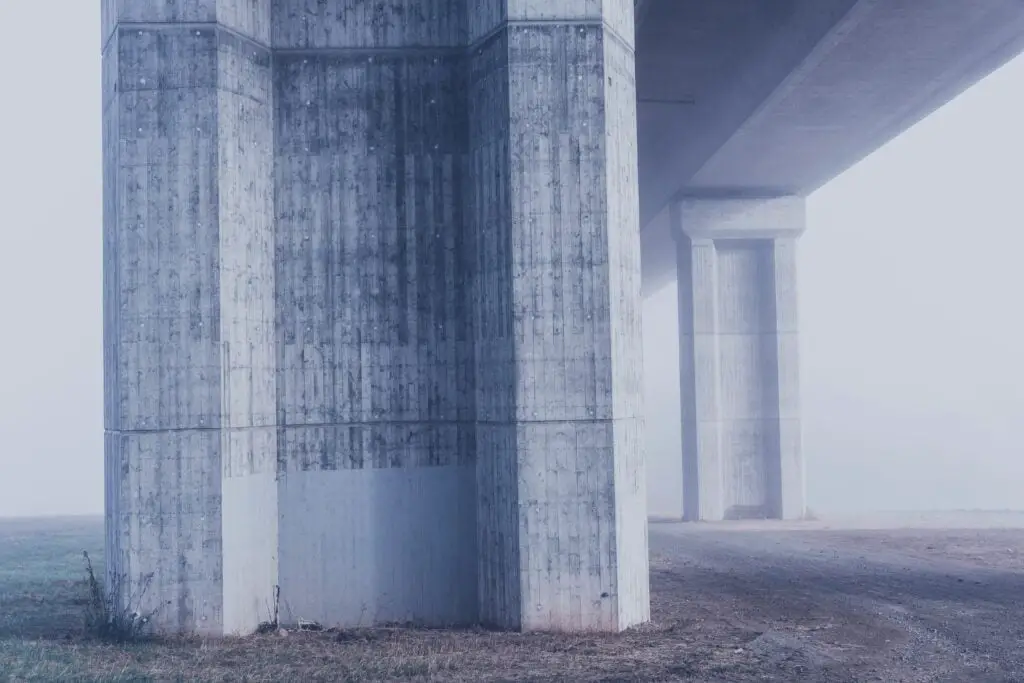What are the most common building materials used in the Philippines?
- Concrete
- Wood
- Metals
- Bricks
- Glass
- Ceramic Tiles
- Concrete Hollow Blocks
- PVC or Polyvinyl Chloride
The weather in the Philippines can go from oppressive heat to a furious storm in a matter of hours. Therefore, sturdy and weatherproof building materials are required for Philippine homes. Here are a few of the typical building supplies used in the Philippines.
Concrete
Aggregate, water, and cement are the three ingredients that make up concrete. Sand, gravel, or rocks can all be used to create aggregate. Combining, shaping, and hardening these materials are done. Due to the materials that make up concrete, it is incredibly flexible and can be shaped into a wide range of forms and sizes.
In the Philippines, concrete is used to build the vast majority of both residential and commercial constructions. It is crucial to design a sturdy foundation since the land on which these homes and buildings are constructed is susceptible to weather changes, which jeopardizes the safety of the construction. A foundation made of steel and concrete is preferred by some. The concrete creates a shield over the steel to stop rusting. In the Philippines, a H Pile is a well-liked foundation since it can provide a home from natural calamities.
Walls and other structural components of a house are also made of concrete. The entire house is strengthened by using reinforced concrete beams and columns. A strong structural design makes use of many reinforcements to build a unified and stable structure.

Wood
Wood is a good material because it is portable and simple to locate locally. It can be utilized to enhance a home’s appearance and provide support. In terms of aesthetics, wood can be observed in pure-wood architectural designs like log cabins. It is a popular among people who always wish to feel at one with nature.
To create a more industrial effect, it can also be used with other building elements like bricks or various metals. Combining several materials can be an effective and distinctive approach to safeguard a home. For instance, to secure everything together, a metal plate can be attached with a hardwood frame on top of a concrete frame.
Due to its light weight, wood is also frequently used to make doors and their frames. The door’s jambs are the frames that enclose its four sides. Whether the door is open or closed, these jambs keep it in place and secure it. To assist reduce friction between the wood pieces, metal plates are screwed in.
Metals
Steel is the metal used in construction the most frequently in the Philippines. This is due to the fact that steel can be produced fast and in large quantities, making it perfect for regional construction companies. In the Philippines, steel is mostly utilized to support walls, roofs, and the foundation of buildings.
Concrete and steel are mixed to protect steel from environmental exposure. This provides a stable base or support for a home’s walls. Steel sheets are also used in many Philippine homes for roof support and roof covering. Steel beams are welded into columns to create trusses, which provide support. An additional safety measure to assist shield the house from heavy winds is this style of roof design.
An H Pile is a sturdy, H-shaped metal base for dwellings in the Philippines because it can support exceptionally huge weights. Additionally, because of its shape, it can be employed in hard-to-penetrate soil. Because of its H-shaped construction, it can withstand the effect of earthquakes and other natural disasters.
Bricks
Clay is typically used to make bricks, which work well in arid regions. These are simple to use because the bricks are already pre-shaped and simple to stack. In the Philippines, bricks are widely used because they provide smooth designs with sharp corners.
Be aware that brick would work best in a home that is not frequently subjected to powerful storms. Extreme weather might soften the clay, which would eventually damage the house’s structural stability. There are, however, more modern bricks on the market that have undergone intense heat treatment. These bricks are the ones you look for because they are more robust, weatherproof, and fireproof.
Glass
A Philippine home is built in a place that allows for a nice view of the surrounding natural surroundings. Homes in the Philippines also strategically arrange windows to encourage excellent airflow within their walls. Glass is now employed as structural support in residences designed in the modern style, in addition to its aesthetic benefits. Walls are replaced with big windows to make the building look more modern.
Ceramic Tiles
Bathrooms and kitchens are typically where you’ll find ceramic tiles. This is so that any stains are simple to remove because ceramic is water resistant. Because clients may select from a variety of designs depending on the design of their home, ceramic is also very popular.
Concrete Hollow Blocks
Concrete Hollow Blocks are the staple building and construction material you can see in the Philippines. Even more so that using bricks and clays. A concrete block that contains hollow areas between its walls is referred to as a hollow concrete block. The same materials used to make poured concrete walls are also used to make hollow blocks, which are used to construct a variety of walls for a variety of purposes, including retaining walls, decorative walls, traditional walls, etc.
When creating boundary walls and other huge buildings, hollow blocks are employed, which have holes that occupy more than one-quarter (and typically more than half) of their cross-sectional area. They are lighter thanks to the holes, which can be advantageous when wiring or running pipes through them.
PVC or Polyvinyl Chloride
You can see almost every construction and buildings as one of the highly used material the PVC or Polyvinyl chloride. It is the main material for pipes and even sheets for roofing.
Both in its rigid and flexible forms, PVC has several uses and benefits in a range of sectors. Rigid PVC in particular has a high density for plastic, which makes it quite tough and generally very robust. It is also affordable and widely available, which when paired with the long-lasting qualities of most plastics, make it a simple choice for many industrial applications like building.
PVC is a desirable material for use in plumbing, building, and other industrial applications because of its great durability and light weight. The material is also fire-resistant because to the high chlorine content, which is another factor in its growing popularity across the Philippines.
Conclusion
You may purchase top-notch building supplies for Philippine homes from a number of reliable local suppliers. Use a combination of these many building materials to determine which one best complements the architectural design of your home. To make sure that the building you are creating is secure enough to survive the nation’s severe weather, only use high-quality materials.
To know the pricelist of grout, Tile Grout Guaranteed Best Construction Material Philippines’ Prices
To know other construction guides, tips, and methodology for beginners, veterans, and contractors, please see here.
To know the flood prone areas in the Philippines, Top 10 Flood-Prone Areas to Live in the Philippines.
To know more about Concrete Hollow Blocks, Simple Reasons Why Hollow Blocks are Highly Used in the Philippines
To know more about Hammers and Nails, Tips for Guaranteed Best Technique for Hammering Nails
To know more about Tees and Wyes, What is the Guaranteed Best to Use: Sanitary Tee Vs Wye

